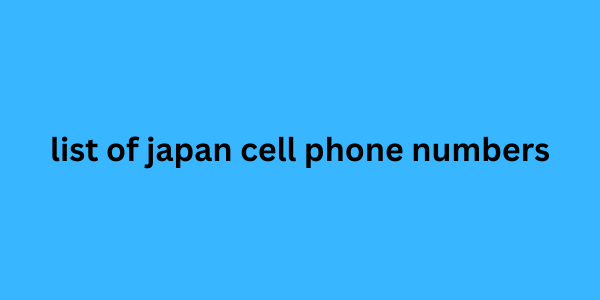Among these, the information regarding an ever-increasing reduction in the intervention of sales agents to complete the sale calls for attention, with 72% of purchases completed entirely online and 83% of customers preferring this method to access a service or product.
However, this dynamic has brought to light another fact: B2B customers who have bought online are 22% more likely to regret the purchase, generating what we define as purchase regret.
Post-purchase dissatisfaction in B2B
Purchase regret can reflect deficiencies in value (actual quality of list of japan cell phone numbers the service or product compared to the price), communication (incomplete or unclear information, and little focus given to the objectives that drive the customer to purchase) and technology (non-functioning or poorly fluid purchasing flows).
Considering that, according to McKinsey, 20% of customers would spend even more than 500 thousand dollars on non-physical purchases, it is important to understand how to overcome these deficiencies.
Although it is still a topic under study, it is possible to start from the three areas mentioned above.
The Opportunity for Sales Directors: Where is the Solution?
In value
In a publication related to the market of our continent, CBI (a department of the Dutch Ministry of Foreign Affairs), stated that value is more important than price. 2
In this analysis of market trends and opportunities in Europe, for example, the advantage of companies that address a niche, or that have a very verticalized service offering, is highlighted.
In fact, these build a more specific knowledge of their customers, sector and market, opening up the opportunity to focus on the quality of service and purchasing experience (essential components for the expert consumers that populate today's customer bases).
Remembering that acquiring customers is important, but retaining them is even more so, understanding and informing one's audience is and remains a priority.
However, it is unlikely that significant results will be achieved if the sales path is not combined with adequate communication and technology that makes the knowledge process practically possible.
In communication
Especially for B2B sales (given the greater attention and experience during the purchase phase), but also in other business models, communication cannot betray the intent to bring value to the customer.
Gartner talks about contents that test the users' willingness to proceed with the purchase and that prepare them to make informed decisions not only with respect to the service itself, but also to the reference sector.
The textual contents that accompany digital funnels, therefore, should be so complete with information that they encourage the user to slow down and reflect on their goals and needs.
At the same time, in interface design, thinking in terms of functionality is the primary aspect.
This is the case of many companies that embrace the trend of minimalist and “clean” designs to help the customer not to get distracted in the purchasing process and to focus on the content.
Furthermore, the UI should be thought of as a tool that could alone make the brand or company recognizable with respect to its identity, thus playing on the trust and reputation factor.
However, the value of communication loses its relevance if the technological foundations that support the digital sales process are not solid.
Simply put, if the sequence of steps for the purchase does not work, is interrupted or does not support engagement with the customer, they will not buy.
In technology
The application of technology to enhance digital funnels is essentially about two goals: enabling the customer to purchase with ease and better understanding how they behave.
Examples include:
The ability to recognize a user already registered to the service who accesses a separate Landing Page, to automatically show them a personalized message or a discount.

The implementation of chatbots that guide the purchase and inform the customer during their journey.
The trigger of specific actions based on customer behavior (assuming, therefore, that the activity of previous customers has been well tracked and segmented).
On the other hand, in some cases it is the developers themselves who are limited by the functionality of the technology in use: consider the simple example in which the connection with a third-party system (for example during the payment phase) does not work.
New call to action
Conclusions
While there are still many instances where the digital purchasing journey is assisted or completed by an agent, B2B is increasingly including entirely digital funnels.
